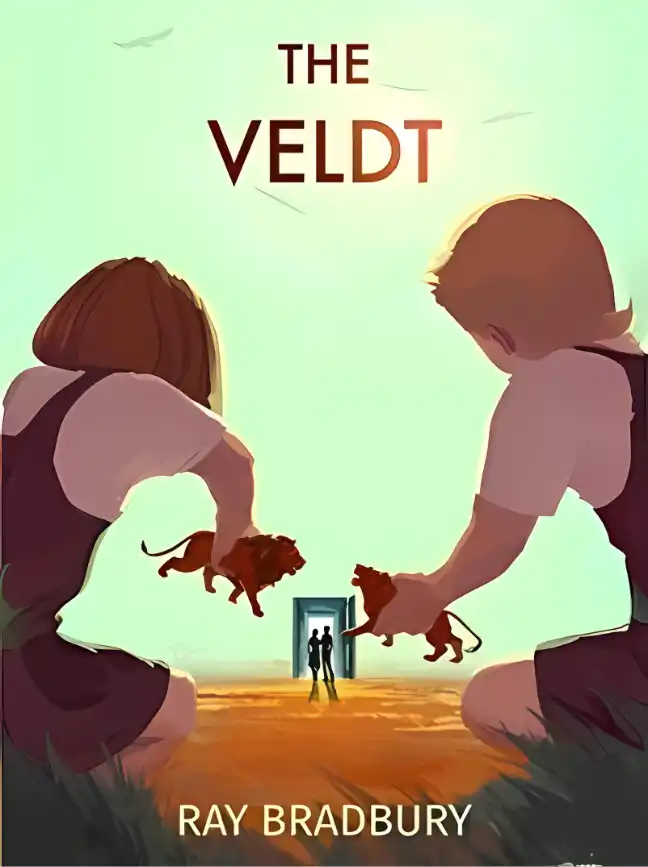EMMA: FOR THE PAST FIVE MONTHS, I have watched the world die.
Glaciers have advanced across Canada, England, Russia, and Scandinavia, trampling everything in their path. They show no signs of stopping. The data says they won’t.
Within three months, ice will cover the Earth, and life as we know it will end.
My job is to find out why. And to stop it.
THE ALARM WAKES ME. I struggle out of my sleeping bag and pull open the privacy door to my sleeping station.
I haven’t slept well since coming to the International Space Station. Especially not since the Winter Experiments began. I toss and turn every night, wondering what the probes will find and if the data will reveal a way to save us.
I drift out into the Harmony module and tap the panel on the wall, trying to identify the source of the blaring alarm. The solar array’s radiators are overheating. I watch as the temperature climbs. Why? I have to stop it-
Sergei’s voice crackles in my earpiece, his Russian accent thick. “‘Is the solar array, Commander.”
I look into the camera above me. “Explain.” Silence.
“Sergei, answer me. Is it debris? Why are we getting heat buildup?”
There are a million ways to die on the ISS. Losing the solar array is a sure one. And there are a lot of ways to lose the array. It operates similarly to photovoltaic solar cells on Earth: solar radiation is converted to direct current electricity. The process generates a lot of excess heat. That heat is dissipated via radiators that face away from the sunlight, into the dark of space. If those radiators are overheating, the heat has nowhere to go but inside the station. That’s bad for life here.
We need to figure this out, and quickly.
Sergei sounds distracted, maybe annoyed. “‘Is not debris, Commander. I explain when I know. Please get sleep.”
The door to the sleep station next to me slides open. Dr. Andrew Bergin stares out with puffy, sleepy eyes.
“Hey, Emma. What’s up?”
“Solar array.”
“We okay?”
“Not sure yet.”
“Sergei, what do you think it is?”
“I think it is solar output. Too high,” Sergei says over the comm.
“A solar flare?”
“Yes. Has to be. Is not isolated radiator malfunction-they all overheated.”
“Shut down the array. Go to battery power.”
“Commander…”
“Do it, Sergei. Right now.”
The panel shows the eight solar array wings and their thirty-three thousand solar cells. I watch as they go offline. The temperature readings in the radiators begin ticking down.
We can run on battery power for a while. We do it fifteen times each day when the solar array is in the darkness of Earth’s shadow.
Bergin asks the question on my mind. “Any data from the probes yet?” I’m already checking.
A month ago, an international consortium sent probes into space to measure solar radiation and look for any anomalies. The probes are part of the Winter Experiments-the largest scientific endeavor ever undertaken. The experiments’ sole goal is to understand why the Earth is cooling. We know that solar output is falling-but it shouldn’t be. Earth should be getting warmer.
Data from the probes will reach the ISS first. But there’s nothing yet. That data could be what saves humanity. Or simply tells us how much time we have left.
I should go back to sleep. But once I’m up, I’m up.
And I can’t wait to see the first data from the probes. I have family back on Earth. I want to know what’s going to happen to them. And there’s an unspoken question among the six astronauts and cosmonauts on the ISS: what becomes of us? If the world is dying-if there’s no world to go back to-will they leave us up here? Three of us are due to return home in a month, the other three in four months. But will our nations expend the resources to bring us home? They’re already dealing with a refugee crisis of unprecedented proportions.
Around the world, governments are struggling to evacuate billions of their citizens to the world’s last habitable zones. And facing a hard decision: what to do with those they can’t evacuate. How much will they invest to bring six people home from space?
Getting home isn’t a walk in the park. The ISS doesn’t have escape pods per se, we have two Soyuz capsules that brought us here. Each holds a maximum of three passengers. We could use them to evacuate the station, but we’d need coordination from the ground, and someone to pick us up when we land.
Once we return, we’ll need even more help. Rehab, for example. In space, our bones lose density. It’s the lack of gravity. The load-bearing bones lose the most density-the pelvis, spine, and legs. The bones literally disintegrate, similar to osteoporosis. The calcium that leaches into the body causes kidney stones-and space is not a place you want to have kidney stones. Some of the first astronauts who visited the ISS lost as much as two percent of their bone density per month. We’ve got that figure down, thanks to exercise. But I’ll still have to go through rehab when I get back. I won’t know what shape I’m in until my feet hit solid ground (or ice, depending).
The truth is this: our use to the people on the surface lies in the Winter Experiments. If we don’t figure out what’s causing the Long Winter-and how to stop it-we’ll never leave this station. We are trapped between the cold dark of space and a freezing planet below. For now, this is home.
Probably will be for a while.
It’s a good home. The best I’ve ever had.
I bounce through the collection of modules that make up the ISS, using my hands and feet to propel me. The station is like a series of oversized pipes screwed together, branching at right angles, most holding labs, some simply connectors.
The Unity node was the first US-built element of the ISS, launched in 1998. It has six berthing connections, sort of like tunnel openings in a sewer system.
I pass into the Tranquility node, which houses life-support equipment, the water recycler, oxygen generators, and a toilet that’s about as hard to use as one might expect for a space commode (also, the ISS was designed by and for male astronauts, so there’s that).
I drift through Tranquility, into the European Space Agency’s observation module. It has a cupola with seven thirty-inch-wide windows that provide a panoramic view of space and the Earth. I hang there for a long moment, watching.
The ISS orbits roughly two hundred and fifty miles above the Earth, flying through space at over seventeen thousand miles per hour. The station circles the planet 15.54 times each day, which means we see either the sunrise or sunset every forty-five minutes.
The station crosses the terminator, revealing the part of the planet bathed in daylight-North and South America.
The ice has extended into the Great Lakes, like bone-white fingers dipping in the blue water. The glaciers will cross the water soon and continue south. Michigan, Wisconsin, Minnesota, and parts of New York have already been evacuated.
The US has done the math. They know what the last habitable zones on Earth will be. Hint: they’re below sea level. A massive camp has been set up in Death Valley, California. Trade agreements have been established in Libya and Tunisia. But everyone knows the agreements won’t hold. Not when survival is the order of the day.
The world will try to stuff eight billion people through a funnel in which only a small portion can survive.
It will be war.
ON THE TREADMILL, I call up a station status report. Sergei still doesn’t have the solar array back online. I want to check in with him, but I’ve learned that he works best when given space. That’s one thing about six people living in very close quarters: you learn each other’s boundaries.
I check for data from the probes again (nothing yet) and begin reading emails.
The first is from my sister.
I never married or had children of my own, but my sister did. And I treasure those kids. In my eyes, they are the sweetest two humans alive.
The email is a video, no subject or content, just my sister, Madison, speaking into the camera as I trot on the treadmill I’m tethered to.
“Hi, Em. I know the video needs to be short, but I have a lot to say. David has heard some rumors. They’re saying that… a lot of things are going to change. That there’s an experiment going on that will tell us why the Long Winter is occurring. People around here are selling their houses for pennies on the dollar and moving to Libya and Tunisia. It’s crazy.
They’re sending troops-”
The video cuts out for a minute or so. Censored. I keep trotting on the treadmill, watching the screen. My sister’s face reappears. She’s still sitting on the couch, but her two children are crowded around her now. Owen and Adeline.
“Hi, Aunt Em!” Owen yells. “Watch this!”
He goes off screen, then the camera pans and I see him dunk a basketball in an indoor hoop that looks about five feet off the ground.
“Did you get it?” he asks his mom.
“I got it.”
“I’m going again in case you didn’t.”
I smile as my sister turns the camera back to her. “Are they bringing you home? And if so… what’s the plan? I know you can’t drive for a while after you return and you’ll have to do rehab. You can come live with us, of course, if NASA isn’t going-if NASA isn’t able to help you get back on your feet.
“Write me back soon, okay? Love you.” Madison turns to her two children, who are now arguing in the background. “Tell your Aunt Emma bye.”
Owen pops his head over the couch and waves. “Bye.”
Adeline plops down next to her mother and leans closer to her, seeming bashful of the camera. “Bye, Aunt Emma. Love you.”
I’m typing an email response when a dialog appears:
Incoming Data: Probe 127
I immediately open it and scan the readings of the solar radiation. I’m shocked. They’re far higher than the readings on Earth, but that makes no sense-the probe is at roughly the same distance from the Sun. Unless the probe was hit with a flare? No, it’s not that: the readings are consistent over time. Maybe it’s a local phenomenon.
I open the video telemetry from the probe, and my heart practically stops. There’s an object. Something out there. A black speck in front of the Sun. It’s not an asteroid; asteroids are jagged and rocky. This object is smooth and oblong. Whatever I’m looking at, someone built it.
We are in constant contact with the ground-with agencies in the US, Russia, Europe, China, India, and Japan. I activate the link to speak directly with the Goddard Network Integration Center in Maryland.
“Goddard, ISS. We’re getting our first data from the probes. Relay in progress. Note: one twenty-seven found something.” I grasp for the right words. “Preliminary telemetry is of an oblong object. Smooth. Does not appear to be an asteroid or comet. Repeat: appears to be a non-natural object constructed by-”
The tablet goes dark. The treadmill stops. The station shudders. Lights flicker.
I tap my internal comm.
“Sergei-”
“Power overload, Commander.”
That doesn’t add up. The solar array is offline. We’re on battery power.
The station shudders again.
My instincts kick in.
“Everybody out of your bunks, right now! Get to the Soyuz capsules! Station evac procedures!”
The station jolts, throwing me into the wall. My head spins. My body reacts instinctively, and my arms propel me up, into the cupola. Through the windows, I see the International Space Station breaking into pieces.








